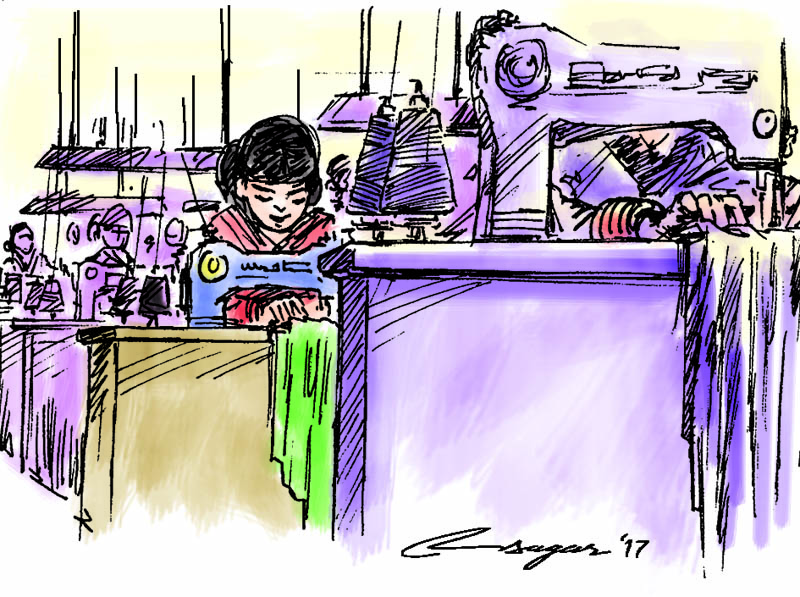Entertainment industry employing minors
Kathmandu, February 9
Though child labour is banned in the country, children continue to be employed in informal/entertainment sector.
A recent study conducted by Chhori Organisation on the entertainment industry in Kathmandu Metropolitan City ward No 32, showed that 21 per cent of workers had not attained 18 years of age. The study was conducted at Kathmandu Metropolitan City ward No 32-based dance bars, restaurants and eateries, massage parlours, spas and guest houses.
HiraDahal, executive director of the organisation, said it was more upsetting to find that 65 per cent of workers in the entertainment sector migrated to Kathmandu during their childhood seeking employment.
“Factors such as poverty, low education and discrimination in society, among others, pushed minors, especially girls, to seek employment in the entertainment sector,” she said.
According to International Labour Organisation, it is estimated that 1.2 million children are trafficked every year around the world. Of them, 43 per cent are trafficked for sex trade, 32 per cent for involuntary servitude and 25 per cent for both purposes.
“Employment of minors in such businesses show how terrible the situation has become,” Dahal said, adding, “There has been a steady increase in the number of girls, who constitute at least two-thirds of all trafficked children.”
Dahal also said the demand for children especially girls, for sex trade was growing around the world.
Dance bars, cabin restaurants and massage parlours are becoming employment destinations for many underage girls.
As per the study, most of the children working in the entertainment industry migrated from Sindhupalchowk, Dolakha, Kavre, Dhading, Chitwan, Makawanpur, Ramechhap, Sindhuli, Gorkha, Bhojpur to Kathmandu.
On the other hand, hundreds of women working in the entertainment sector face exploitation. Most of the women employed in dohori sanjh restaurants, massage parlours and dance bars get very low pay and are not even given appointment letter. On top of it, they have to face sexual abuse and harassment at the workplace.
Although in 2008, the Supreme Court had issued a verdict and procedural guidelines to prevent economic and sexual exploitation of women and girls in the entertainment sector, nothing has been done to implement the court’’s order even after 10 years.
As per an earlier report, 49 per cent women employed in entertainment industry faced sexual abuse, 43 per cent did not get salary on time, 33 per cent didn’t receive transportation allowance and 22 per cent workers did not receive payment for overtime work.
According to the data made public by Swotantrata Abhiyan and five other organisations working for the people in entertainment industry, more than 60,000 people have been working in the entertainment sector.






